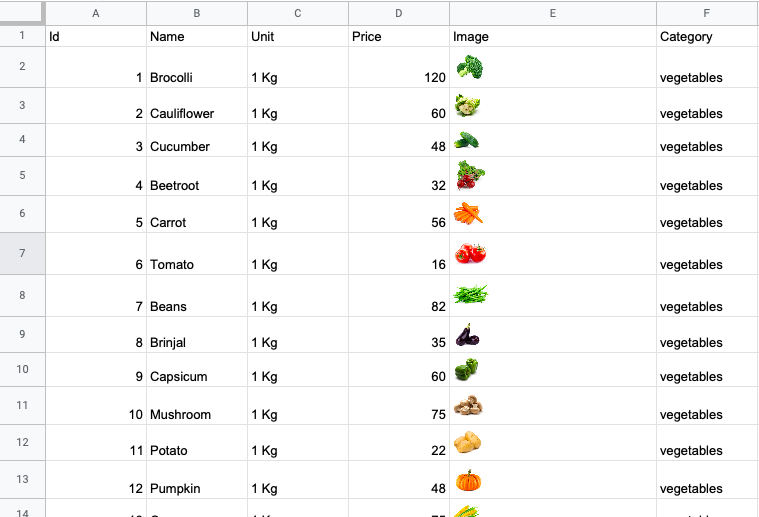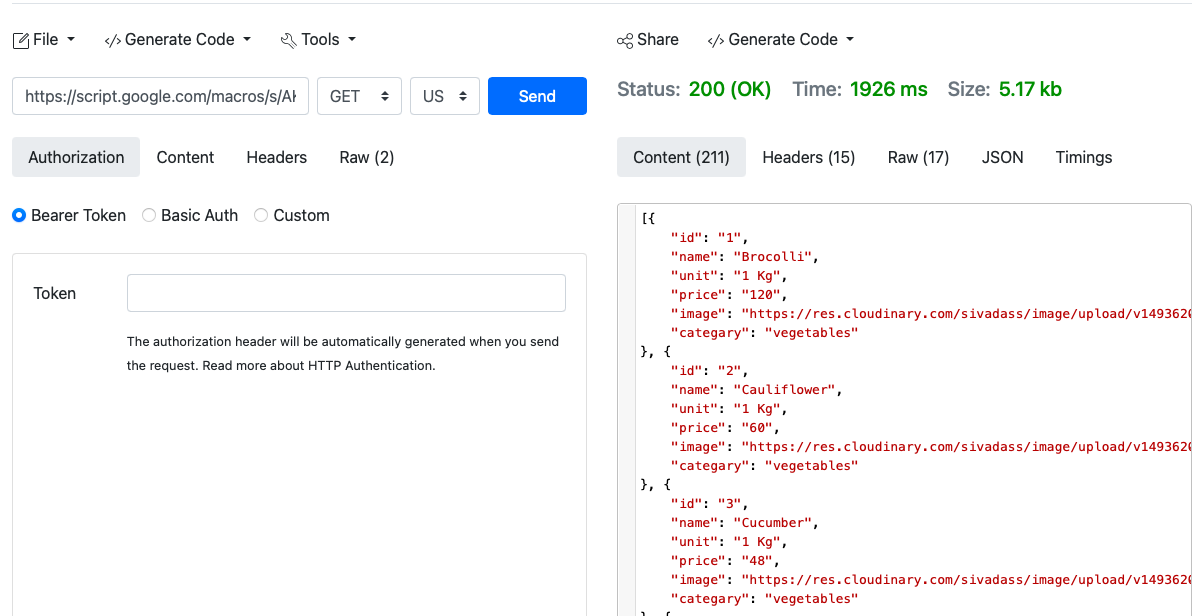Use google sheets as a content management system (CMS) for an eCommerce site
10 Apr, 2021
The previous blog: next-shopping-cart
You can check the code of this project on Github.
Google Sheets have some great advantage as a content management system.
- It is easy for people to get started and the cost of learning is extremely low
- Build-in collaboration support
Cons:
- There are usage limits for the Google Sheets API.
- It is not a proper database if your business keeps growing. However, it is still capable of connecting Google Sheets with other headless CMSs.
Here is an example of using Google Sheets for an eCommerce site.
For a small site, it is easy to maintain and update by using Google Sheets. Also, we can use Google App Script to select the data and output it to other platforms. In Google App Script, we have to first implement a doGet() function as a response to an HTTP get request. From the sheets’ URL and page name, we can reach the data we need. The code below can explain itself.
function doGet(e) {
var SPREADSHEET_URL = "Google Sheets' URL";
var SHEET_NAME_ONE = "Sheets' name";
// Get the sheets by name
var ss = SpreadsheetApp.openByUrl(SPREADSHEET_URL);
// Get the certain sheet by name
var sheet = ss.getSheetByName(SHEET_NAME_ONE);
var jo = getItems(sheet);
// Stringify and output the data
var result = JSON.stringify(jo);
return ContentService.createTextOutput(result).setMimeType(
ContentService.MimeType.JSON
);
}
function getItems(sheet) {
var dataArray = [];
// Collect data from the 2nd row to the last row vertically,
// and from the first column to the last column horizontally for each row
var rows = sheet
.getRange(2, 1, sheet.getLastRow() - 1, sheet.getLastColumn())
.getValues();
// For the equation use getFormulas instead of getValues
var urls = sheet.getRange(2, 5, sheet.getLastRow() - 1, 1).getFormulas();
// Go through all the rows to put data into an array
for (var i = 0, j = rows.length; i < j; i++) {
var dataRow = rows[i];
var record = {};
record["id"] = dataRow[0].toString();
record["name"] = dataRow[1];
record["unit"] = dataRow[2];
record["price"] = dataRow[3].toString();
// Extract the URL data using regular expression
record["image"] = urls[i][0].match(/=image\("(.*)"/i)[1];
record["categary"] = dataRow[5];
dataArray.push(record);
}
return dataArray;
}
Then save the file --> click deploy --> new deploy --> select type ( web application) --> select anyone can access the application --> deploy. We can check the result from an API testing tool online.

This is really useful for some showcase websites.